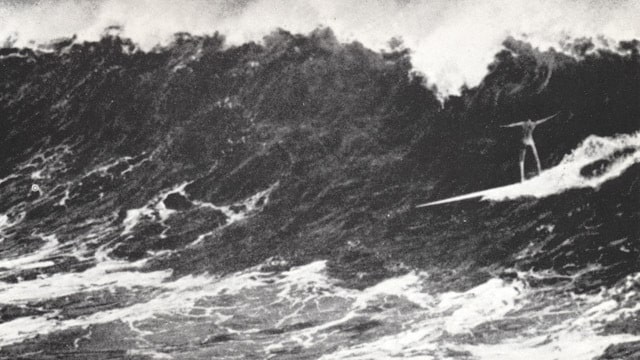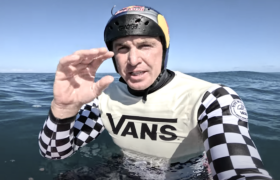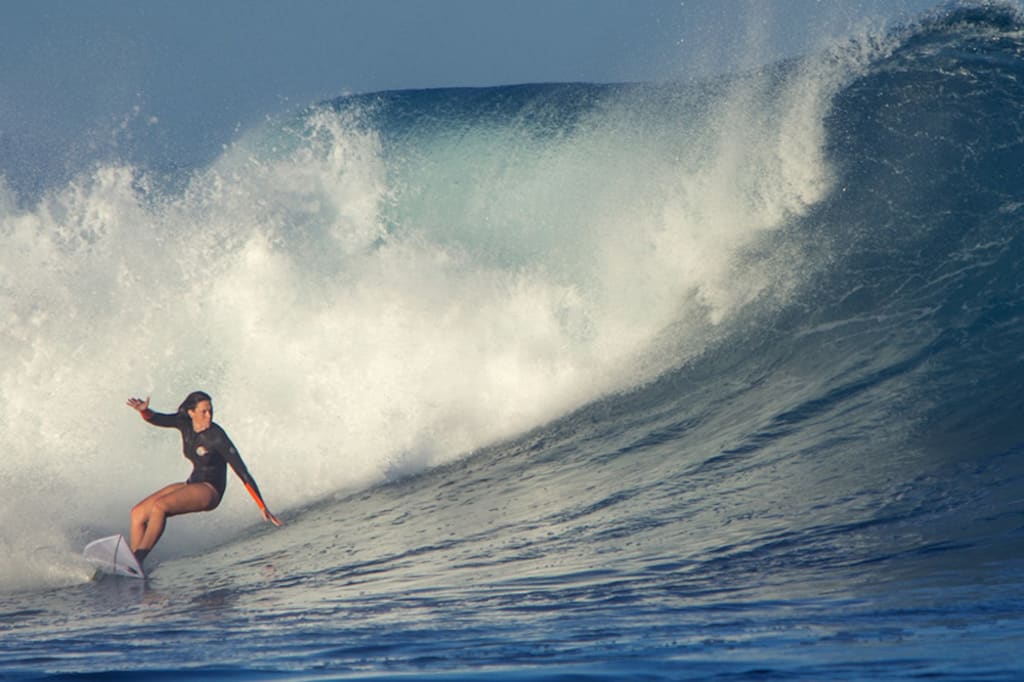A glorious history of the surfing Flim-Flam man!
Last month, Moroccan-born Ahmed Erraji posted a tightly-edited YouTube clip of himself wiping out somewhere in the Canaries. He gets swept shoreward, pushed into a cave, and is trapped for over two hours before the tide drops and he is literally ejected back to open ocean and safety.
Erraji’s GoPro survived the tumult and allowed him to film the ordeal from inside the cave, and the money shot is a selfie of his zinc-covered worried-but-not-panicked face as a wave rushes into his rock-ceilinged cravasse and turns the screen black.
Watch the clip here.
I’m 96% sure the whole episode is bullshit, and the number goes up each time I watch. Surf-world opinion is divided. Tracks thinks the clip is legit.
BeachGrit readers do not, for reasons listed in the comments section here.
(It may not be the biggest tell—nobody else brought it up—but watch for a split-second shot at 3:23 of Erraji supposedly riding a backwash off the cliff and erupting missile-like from the far side of the next wave.)
I’ve given some thought to the difference and confluences, in a surf-world context, between the prank, the scam, and the hoax.
The prank is the fun-forward member of the trio. The prank is 15-year-old Roman Emperor Elagabalus not only inventing the whoopie cushion but also sneaking full-grown (tame) lions into the bedrooms of guests who were sleeping off the previous night’s orgy.
“Indeed,” the Historia Augusta noted, “for him life was nothing except a search after pleasures.”
The print version of Encyclopedia of Surfing was fragged by this amazing prank from 20 years ago when a sandboarding expert in Oregon spread the word that his sport began in ancient Egypt on clay pottery fragments, and I printed that in the book.
In turn, I have written about noteworthy surf-world pranks, and three of the best are featured here.
Great hoaxes age well, and my favorite will always be “A Surfer’s Nightmare,” in which Doc Ball not only superimposed a shot of “Nellie Bly” Brignell in full crucifixion stance atop a photo of a massive pre-WWII Long Beach storm wave, but sold it to Look magazine—and yes, I suppose that means that Ball himself, while deeply religious, wasn’t above a bit of lightweight scamming, and good for him.

“This picture has caused more controversy than any other I possess,” Ball later said, and I for one detect a hint of pride in his voice.
The scam by nature is not fun—unless you are Paul Newman or Robert Redford, in which case it is very fun indeed. The scam is conceived and deployed to enrich the scammer. Scientifically defined, the scam is three-quarters of whatever Miki Dora did when he wasn’t riding waves. (Dora of course dabbled elsewhere, and it might be said that he pulled off a scam-prank-hoax trifecta with his 1974 “Winner Take All” competition scheme.)
While I appreciate our flimflamming pioneers, I also cheer those who push forward, and this brings us to a final point.
Apart from working in a different medium, has Ahmed Erraji bring anything new to the game?
Yes. He previewed the hoax. He called his shot. Scroll Erraji’s Instagram, and look for the April 7, 2021, post.
There it is, all teed up in the caption.
“Find what you love and let it kill you.”
(You like this? Matt Warshaw delivers a surf history essay every Sunday, PST. All of ’em a pleasure to read. Maybe time to subscribe to Warshaw’s Encyclopedia of Surfing, yeah? Three bucks a month.)









